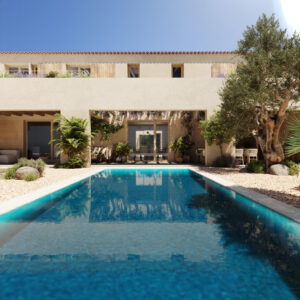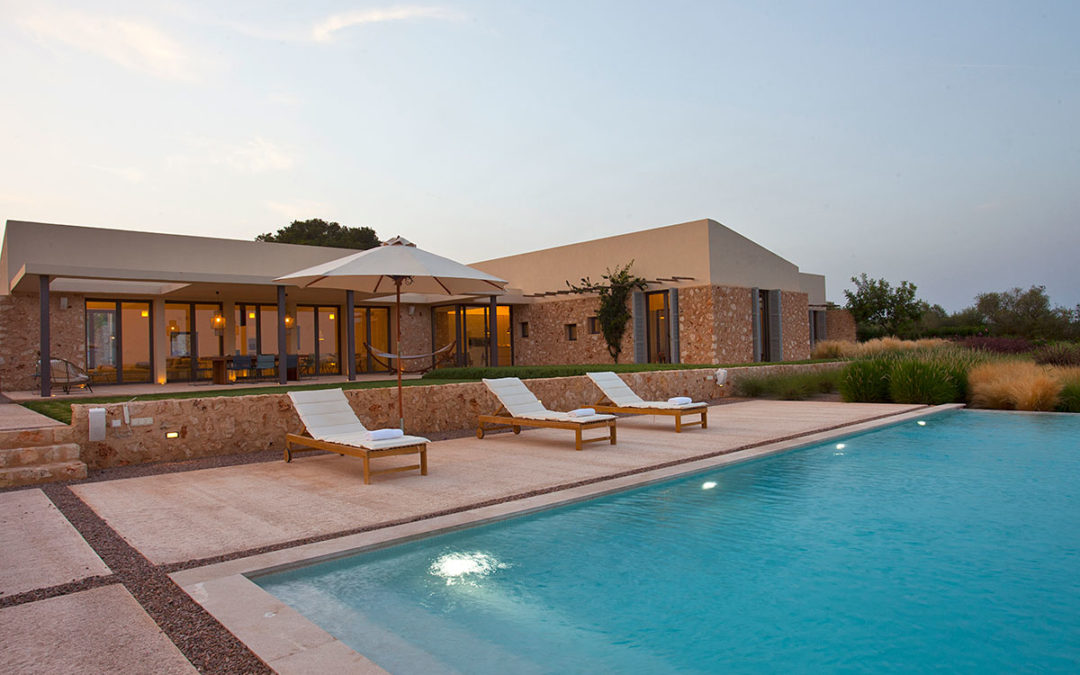
Sell with confidence: real estate agent Casal Mallorqui in Manacor, Mallorca
When the moment has come to make the decision to sell your property in the idyllic area of Manacor on Mallorca, a unique opportunity presents

Sometimes our minds wander and we can’t help but imagine admiring the landscape from the terrace of our new home, while the sun caresses our faces and the water in the pool refreshes our feet. Surely it is impossible not to be seduced by the nature of rural Mallorca. With the centuries-old olive trees, lonely carob trees and the picturesque almond blossom, it seems as if time has stood still.
Buying a plot of land with all this natural beauty is undoubtedly the first step you need to take in order to fulfill your dream of building an idyllic property in this timeless Mediterranean paradise.
But like most things in life, making that dream come true is subject to some stipulations, dreams may not change, but building codes do. A good example of this is the Legislative Decree 9/2020, of May 25th, recently approved by the Balearic Government Council, with the rules and norms that from now on will regulate the construction of houses on rural land. With these changes, you can have those moments sooner if you take it easy and learn about the new building regulations first.
At the beginning it is essential to be clear about the type of property to be built on, because these are subject to different regulations in Mallorca and not all allow urban development. The new regulation keeps the building ban in:
The Natural Areas of Special Interest with a High Level of Protection (AANP).
The Natural Areas of Special Interest (ANEI).
Rural Areas of Special Interest for Forest Landscape (ARIP-B).
The Territorial Protected Areas (APT).
The transitional growth areas (AT-C).
And at and extends this prohibition now:
The Risk Avoidance Areas (SRP-APR), i.e. the areas with potential risk of flooding, fire, erosion or landslides.
Previously, the territorial plan of the island of Mallorca provided for a conditional use of the properties located in risk avoidance areas, which allowed a maximum development of the property of 3% (sealed area) and a maximum living area of 2%. However, with the entry into force of the new decree, the construction of new single-family houses on plots that are entirely within this category of areas is strictly prohibited.
Second, the minimum lot size required to be allowed to build on ordinary, rural terrain must be considered. The new legislation has not introduced any changes in this regard. Therefore, as with previous legislation, a minimum plot size of 14,000m² or 50,000m² is required, which ultimately depends on the plot characteristics and category on which we intend to build.
So the next logical question is how much we can build on a piece of land after the new regulation comes into force. It depends on! Although, as mentioned above, the new decree includes the same required minimum areas as the previous regulations for the buildability of the land, this is not the case with regard to the size of the buildings. Undoubtedly the most important change is the reduction of the built-up area of single-family houses.
Compared to the previously allowed 1,500 m³, the maximum volume of the building complex in each category of rustic land must now not exceed 900 m³.
In the same way, the new regulation establishes that the maximum buildable area is no longer applicable in the case of land belonging to the Natura 2000 network and protected land classified as a Rural Area of Landscape Interest (SRP-ARIP). than 1% of the plot, or 1.5% in other categories. Likewise, for the Natura 2000 network and SRP-ARIP land, the maximum percentage of the plot on which buildings and other fixed elements – such as garages, storage rooms, access areas, terraces or the swimming pool – may stand will be limited to a maximum of 1.5%. and fixed at a maximum of 2% for the other categories. Finally, it should be borne in mind that the various island councils and municipalities could apply even more restrictive parameters.
The effects of the new regulations can perhaps best be illustrated with a practical example. Imagine we want to build a house on rustic land in the municipality of Manacor and we purchase a plot of 15,000 m².
While previously up to 450 m² could be built on (with a maximum buildable area of 3%), the current regulations reduce construction to 225 m², as only a maximum of 1.5% of the area may be built on.
Furthermore, we imagine that until now a house of 500 m² with a maximum height of 3 meters (500 m² x 3 meter height = 1,500 m³) could be built. With the reduction in the maximum volume now in force, today we could only build a house of 300 m² with a height of 3 meters (300 m² x 3 meters high = 900 m³) in the same situation.
Landscape and ecological integration of housing
As soon as it has been clarified where and how much can be built, it is necessary to make further considerations.
The new legislation maintains the previous provisions regarding the maximum height of the structure, the total area of the canopies, the type of exterior carpentry work, the characteristics of the roof and the visual aspect of the materials and finishes, the facades and the assessment of slopes. Nonetheless, it establishes a number of specific guidelines aimed at greater integration of the building into the landscape and environment.
Therefore, from now on, new buildings and conversion work on existing buildings on finca plots must have a holistic, technical project that maps all measures that are to be carried out on the entire property.
This includes the obligation to maintain the terrain, in particular the vegetation, and traditional plantings and plantations, as well as maintaining existing farms. Similarly, elements of ethnographic or cultural value should be restored and preserved.
The enclosures of the properties are also affected: They may only be restored with traditional, island-typical surfaces and materials, whereby the use of native plant elements must be given priority. It will also be necessary to comply with current light pollution legislation to minimize the impact on the night sky.
The enclosures of the properties are also affected: They may only be restored with traditional, island-typical surfaces and materials, whereby the use of native plant elements must be given priority. It will also be necessary to comply with current light pollution legislation to minimize the impact on the night sky.
The enclosures of the properties are also affected: They may only be restored with traditional, island-typical surfaces and materials, whereby the use of native plant elements must be given priority. It will also be necessary to comply with current light pollution legislation to minimize the impact on the night sky.
At Casal Mallorquí we know that building a home is a fundamental decision and an exciting process, but it can also make you feel overwhelmed if you don’t have the right help and support by your side. Our extensive experience in building fincas has taught us something very important: Working with good professionals helps to reduce the stress level that sometimes comes with building a new home.
Therefore, if you think about your peace and comfort, not only do we put at your disposal renowned architects, legal advisers, lawyers and real estate agents, but we also accompany them throughout the construction process.
We are at your disposal in our office in Manacor and will provide you with all the information you need to make the best possible choice.

When the moment has come to make the decision to sell your property in the idyllic area of Manacor on Mallorca, a unique opportunity presents

If you are planning to sell your property on Mallorca, you may have already started looking at the various documents and certificates you need to

Are you interested in buying a second-hand country house in Majorca but nothing meets your expectations? Tearing down old structures and building afresh may be

Mallorca, located in the Balearic Islands, is known for its natural beauty and picturesque landscapes. Many property owners and real estate developers are drawn to
Owning a home is a keystone of wealth… both financial affluence and emotional security.
Suze Orman